Search
Search Results
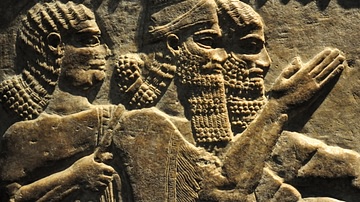
Image
Tiglath Pileser III
Detail of a gypsum wall-relief showing the Assyrian King Tiglath Pileser III (recognizable by his long beard, royal head cap, and the exquisitely carved fringed robe). A charioteer stands on his left side while a royal attendant stands behind...
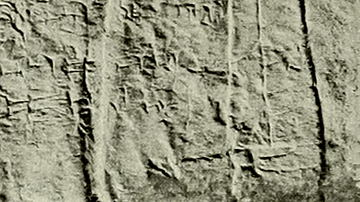
Image
Tiglath Pileser I
From a rock relief found in 1862 CE at Birleyn, also called "The Tigris Tunnel", in modern-day Turkey. Tiglath Pileser I is identified in the cuneiform inscription. British Museum, London
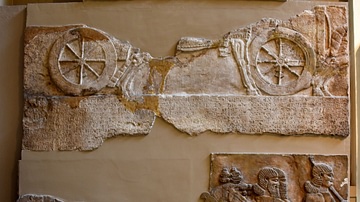
Image
Assyrian Chariots
This wall panel, one of a series, shows two disconnected scenes. Above is part of a battle. Below, the royal chariot waits behind Tiglath-pileser III, who was shown on a panel to the right. The writing in the middle deals with the Assyrian...
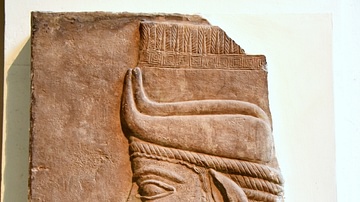
Image
Assyrian Winged-bull Head
This fragment of a human-headed winged-bull, from Tiglath-pileser III's palace, is carved in low-relief like a wall panel. There is a marked contrast with the colossal figures in very high relief, of both earlier and later periods. Assyrian...
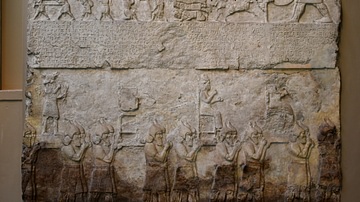
Image
Assyrian Military Campaign Against Syria
This wall panel, one of a series, shows 2 disconnected scenes. Above, Tiglath-pileser III's army is attacking a town, perhaps in Syria. Below, Assyrian soldiers carry "gods" captured from a defeated enemy. The writing in the middle describes...
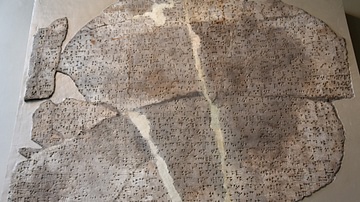
Image
Door Slab from the Central Palace, Nimrud
These cuneifrom inscriptions describe some of the military campaigns of the Assyrian king Tiglath-pileser III (reigned 744-727 BCE) and were probably first placed in a doorway of the Central Palace built by this King at Nimrud. Assyrian...
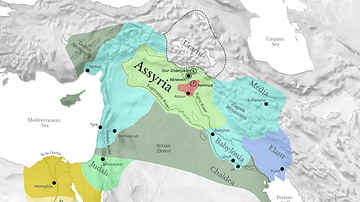
Image
Neo-Assyrian Empire c. 912 - 612 BCE
Map of the Neo-Assyrian Empire c. 912 - 612 BCE, showing expansion by Shalmeneser III (r. c. 859 - 824 BCE), Tiglath-Pileser III (r. c. 745 - 727 BCE), Sargon II (r. c. 722 - 705 BCE), Sennacherib (r. c. 705 - 681 BCE), and Ashurbanipal (r...
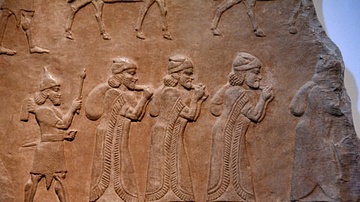
Image
Deported people from the city of Astartu
This detail depicts the deportation of the inhabitants of the city of Astartu (in modern-day Jordan Kingdom). The deported people are holding their personal belongings and are led by an Assyrian solider. The city was captured by the Assyrian...

Image
Phoenician Bronze Bowl from Nimrud
Over 150 bronze bowls were found in a palace at the city of Nimrud. These bowls were made in Phoenicia (modern-day Lebanese and Syrian coasts), and were brought to Nimrud as tribute or booty by one of the kings who campaigned in the west...
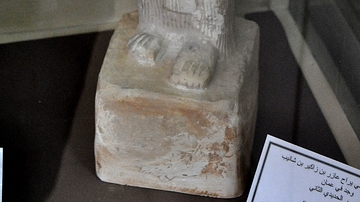
Image
Statue of Yerah' Azar
The inscriptions of this limestone statue mention that the statue belongs to Yerah'Azar, son of Zakir, son of Sanipu. Sanipu is known to have submitted to the Assyrian king Tiglath-Pileser III in the year 733 BCE. The eyes were originally...